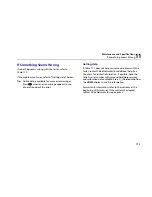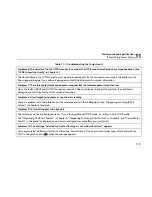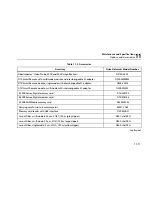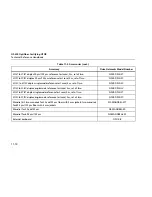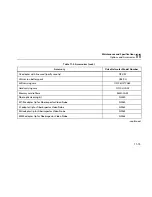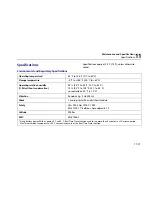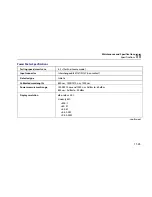
Maintenance and Specifications
Options and Accessories
11
11-11
Table 11-3. Accessories
Accessory
Fluke Networks Model Number
FiberInspector
Video Probe, 250X and 400X magnifications
OFTM-5352
DTX Smart Remote with multimode module and interchangeable SC adapter
OFSR-MMREM
DTX Smart Remote module, singlemode with interchangeable SC adapter
OFSR-SFM2
DTX Smart Remote module, multimode with interchangeable SC adapter
OFSR-MFM2
32 MB Secure Digital memory card
DTX-SMC32
64 MB Secure Digital memory card
DTX-SMC64
32 MB MultiMedia memory card
DSP-MMC32
Carrying case for up to 8 memory cards
MMC CASE
Memory card reader with USB interface
DSP-MCR-U
Launch fiber, multimode, 62.5
µ
m, SC/SC, 100 m (gray zipper)
NFK1-LAUNCH
Launch fiber, multimode, 50
µ
m, SC/SC, 100 m (aqua zipper)
NFK2-LAUNCH
Launch fiber, singlemode, 9
µ
m, SC/SC, 130 m (yellow zipper)
NFK3-LAUNCH
-continued-
Summary of Contents for OF-500 OptiFiber
Page 12: ...OF 500 OptiFiber Technical Reference Handbook x ...
Page 18: ...OF 500 OptiFiber Technical Reference Handbook xvi ...
Page 27: ...Getting Acquainted Powering the Tester 1 1 9 ajt20f eps Figure 1 1 Battery Pack Features ...
Page 29: ...Getting Acquainted Verifying Operation 1 1 11 ajt56f eps Figure 1 2 Removing the Module ...
Page 46: ...OF 500 OptiFiber Certifying OTDR Technical Reference Handbook 1 28 ...
Page 136: ...OF 500 OptiFiber Certifying OTDR Technical Reference Handbook 4 6 ...
Page 192: ...OF 500 OptiFiber Certifying OTDR Technical Reference Handbook 6 48 ...
Page 254: ...OF 500 OptiFiber Certifying OTDR Technical Reference Handbook 11 36 ...
Page 256: ...OF 500 OptiFiber Certifying OTDR Technical Reference Handbook ...
Page 272: ...B 14 OF 500 OptiFiber Certifying OTDR Technical Reference Handbook ...
Page 274: ...OF 500 OptiFiber Certifying OTDR Technical Reference Handbook C 2 ...
Page 282: ...OF 500 OptiFiber Technical Reference Handbook 8 ...











